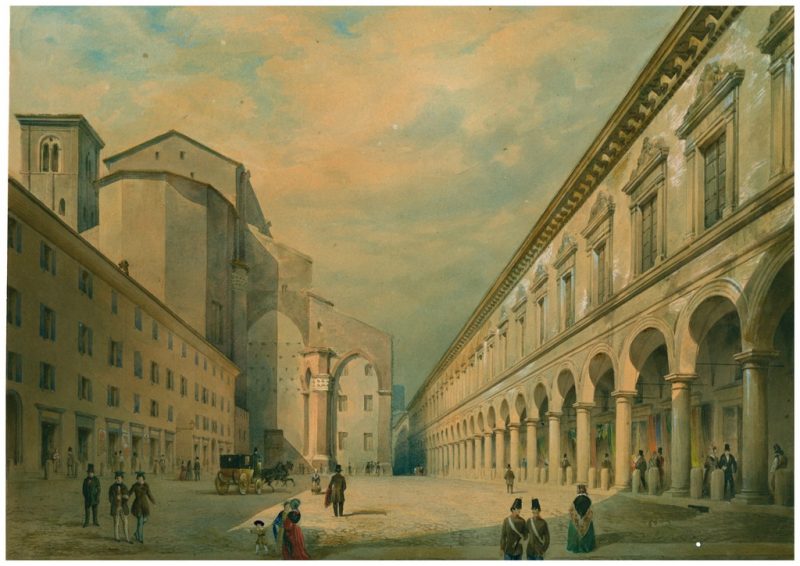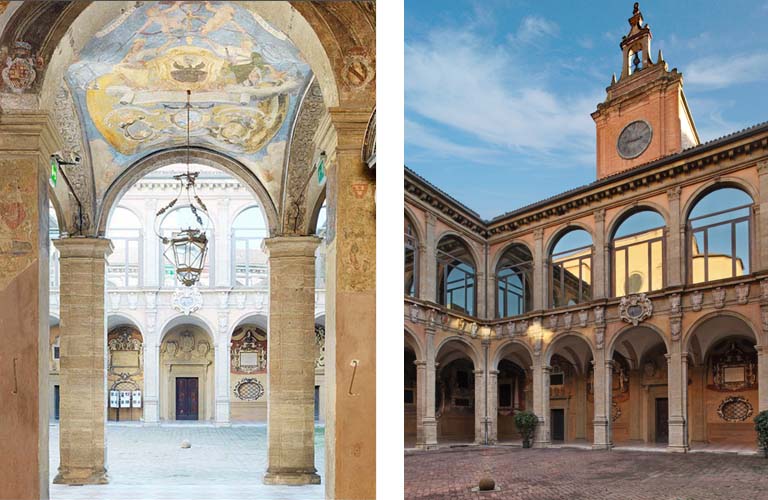In the early sixties of the 17th century, the University of Bologna was in competition with the new Italian and foreign universities, so Pope Pius IV decided to reorganize and restore its prestige: he decided to assemble the schools of the Legisti (Civil Law and Canon Law) and those of Artists (Philosophy, Medicine, Mathematics, Physical and Natural Science) into a single seat. Until then, the two schools were hosted in different places of the city.
The building of the “new schools”, or “Archiginnasio” as it was called with a classical term, was rapidly built in a year and a half, and it was inaugurated on the 21st October 1563.
The Bolognese architect Antonio Morandi, known as “Terribilia”, created a façade on two floors with a porch, which mirrors the typical features of the local architecture also for the materials used, which are terracotta and sandstone.
The palace is built in an irregular space and develops mainly horizontally, facing Piazza Galvani and the left side of the basilica of San Petronio.
The Archiginnasio is one of the major urban renewal projects of the second half of the 16th century.
The fountain of Neptune (realised in 1564), the Hospital of Death (built in 1565) and Palazzo dei Banchi (built between 1565 and 1568 and which closes the eastern side of Maggiore square) date back to those years.
The courtyard
The courtyard with double porch, which is the real fulcrum of the building, is influenced by the architecture of university boarding schools, of which that of Spain in Bologna is the prototype. It reminds the courtyards of the noble palaces of the city, where sumptuous public ceremonies were held.
The courtyard was the scene of numerous events related to the history of Study: the most picturesque ceremony was the preparation of the Teriaca, a drug obtained by the combination of fifty elements, which served as a panacea against all ills and, in particular, against the bite of wild and poisonous animals.

